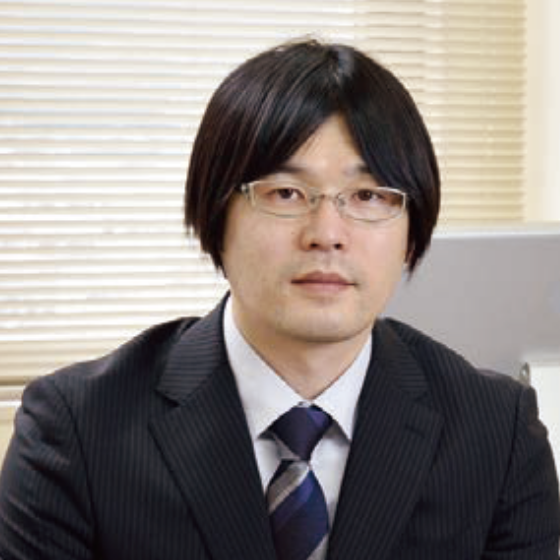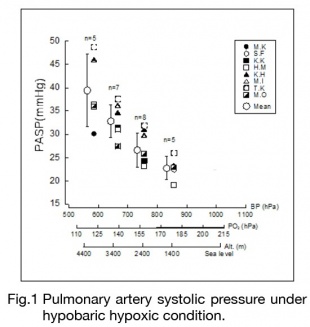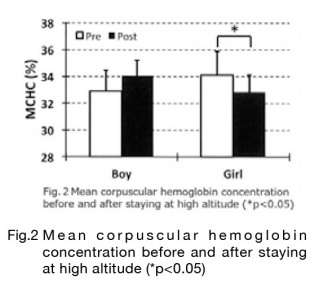- Home
- Faculty Members
- Department of Sports and Health Sciences
- Taketeru Maegawa
Faculty of Sports and Health Sciences
Department of Sports and Health Sciences
- Key words
- Environmental adaptation, altitude acclimation, respiration, chemosensitivity, physical exercise, training, training adaptation, high altitude training, sports, physical education

Master of physical education / Lecturer
Taketeru Maegawa
Education
School of Physical Education, National Institute of Fitness and Sports in Kanoya,
National Institute of Fitness and Sports in Kanoya, Graduate School of Physical Education, Master’s Course in Physical Education,
National Institute of Fitness and Sports in Kanoya, Graduate School of Physical Education, Doctor's Course in Physical Education
Professional Background
Research Associate, National Institute of Fitness and Sports in Kanoya, Researcher/Program Manager, Japan Institute of Sports Sciences, Research Associate, Japan Women’s College of Physical Education, Researcher, The University of Tokyo, Assistant Professor, Nippon Sports Science University
Consultations, Lectures, and Collaborative Research Themes
Lectures on high altitude acclimation and high altitude/hypoxic training and consultation on practical use. Analytical evaluation of physical fitness of competitive and recreational athletes.
Main research themes and their characteristics
「Effects of hypoxic ventilatory response and pulmonary artery response to arterial oxygen saturation under hypobaric hypoxia」
This study aimed to investigate the effects of hypoxic ventilatory response (HVR) and pulmonary artery response on arterial oxygen saturation (SpO2) under hypobaric hypoxia.
The subjects were healthy adults: 7 men and 1 woman(members of the Japanese Antarctic research exploration). The HVR of all subjects was measured under normoxia by using the progressive hypoxia method before being exposed to hypobaric hypoxia. The pulmonary artery systolic pressure (PASP) of the subjects was measured in hypobaric hypoxic environments at 1400m (856hPa), 2400m (756hPa), 3400m (666hPa), and 4400m equivalents (585hPa). SpO2 was measured simultaneously using a plus oximeter. A hypobaric chamber was used to create hypobaric hypoxic environments.
Because barometric pressure declined, SpO2 significantly declined, and PASP significantly increased. Significant correlation was found between PASP and SpO2. Pulmonary hyperinflation findings were confirmed in three subjects, one at an altitude of 3400m and two at an altitude of 4400m.
The rise in PASP, accompanying barometric pressure reductions, is gradual until a sudden dramatic increase in altitude from 3000m to 4000m. We learned that there are large individual subject differences in changes in PASP with respect to changes in barometric pressure. Therefore, we consider that oxidation levels in the body during acute responses to high-altitude environments are primarily dependent on pulmonary vascular response to hypoxia.
「The effects of staying at a high altitude: sex differences in erythrocyte properties」
In this study, we examined sex differences in the effects of high altitude on erythrocyte properties.
The subjects were 7 boys and 8 girls. The subjects stayed at a high altitude of 2200 m for 15 days. Their hematocrit levels (Hct) and hemoglobin concentrations (Hb) were measured before and after their stay, and changes in mean corpuscular hemoglobin concentration (MCHC) and plasma volume were also calculated.
Hb was significantly high on Day 3 in boys and decreased on Day 8 compared to that on Day 3. However, a significantly higher value was observed again on Day 12. It is assumed that hemoconcentration occurred as an acute adaptation to the high-altitude and hematogenesis was enhanced after the hemoconcentration subsided. Although Hb was significantly high in girls on Days 3 and 8, on Day 12, it returned to the same level before the stay at high altitude. It is assumed that erythropoietic response differed substantially among individuals after hemoconcentration subsided in girls. Comparing before and after training at the high altitude, no significant difference was observed in Hct, Hb, and MCHC in the boys. Increase of blood volume without a qualitative change of erythrocyte may have occurred. Hb concentration tended to decrease and MCHC significantly decreased in girls. Qualitative change of erythrocytes may have occurred in girls.
Major academic publications
T. Maegawa, N. Suzuki, H. Kobai, K. Yanagisawa, T. Noguchi, T. Yokozawa
“The effects of staying at a high altitude of 2,200m: sex differences in erythrocyte properties”
Japanese Journal of Mountain Medicine, 39 (2019) 53-59.
T. Maegawa, N. Suzuki, H. Kobai, T. Homma, T. Yokozawa
“Effects of high altitude on glycolysis in female athletes during exercise”
Japanese Journal of Mountain Medicine, 33 (2013) 114-120.
T. Fukuda, T. Maegawa, A. Matsumoto, Y. Komatsu, T. Nakajima, R. Nagai, T. Kawahara
“Effects of Acute Hypoxia at Moderate Altitude on Stroke Volume and Cardiac Output During Exercise”
International Heart Journal, 51 (2010) 170-175.


